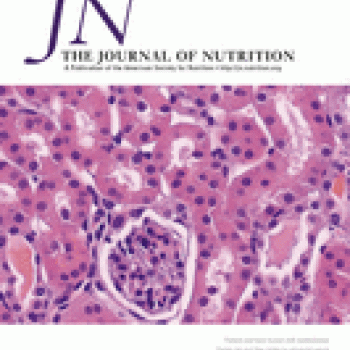Publication Information

Background: Poor childhood nutritional status has lifetime effects and food insecurity is associated with dietary practices that can impair nutritional status.
Objectives: We assessed concurrent and subsequent associations between food insecurity and height-for-age z scores (HAZs) and body mass index?for-age z scores (BMI-Zs); evaluated associations with transitory and chronic food insecurity; and tested whether dietary diversity mediates associations between food insecurity and nutritional status.
Methods: We used data from the Young Lives younger cohort composed of children in Ethiopia (n = 1757), India (n = 1825), Peru (n = 1844), and Vietnam (n = 1828) recruited in 2002 (round 1) at ?1 y old, with subsequent data collection at 5 y in 2006 (round 2) and 8 y in 2009 (round 3).
Results: Children from food-insecure households had significantly lower HAZs in all countries at 5 y (Ethiopia, ?0.33; India, ?0.53; Peru, ?0.31; and Vietnam, ?0.68 HAZ; all P < 0.001), although results were attenuated after controlling for potential confounders (Ethiopia, ?0.21; India, ?0.32; Peru, ?0.14; and Vietnam, ?0.27 HAZ; P < 0.01). Age 5 y food insecurity predicted the age 8 y HAZ, but did not add predictive power beyond HAZ at age 5 y in Ethiopia, India, or Peru. Age 5 y food insecurity predicted the age 8 y BMI-Z even after controlling for the 5 y BMI-Z, although associations were not significant after the inclusion of additional confounding variables (Ethiopia, P = 0.12; India, P = 0.29; Peru, P = 0.16; and Vietnam, P = 0.51). Chronically food-insecure households had significantly lower HAZs than households that were consistently food-secure, although BMI-Zs did not differ by chronic food-insecurity status. Dietary diversity mediated 18.8?30.5% of the association between food security and anthropometry in Vietnam, but mediated to a lesser degree (8.4?19.3%) in other countries.
Conclusions: In 4 countries, food insecurity at 5 y of age was associated with both HAZ and BMI-Z at age 8 y, although the association was attenuated after adjusting for other household factors and anthropometry at age 5 y, and remained significant only for the HAZ in Vietnam.
Keywords: household food security; child growth; weight gain; dietary diversity; longitudinal cohort study
ReferenceDebbie L. Humphries, Kirk A. Dearden, Benjamin T. Crookston, Lia C. Fernald, Aryeh D. Stein, Tassew Woldehanna, Mary E. Penny, Jere R. Behrman, on behalf of The Young Lives Determinants and Consequences of Child Growth Project Team (2015) 'Cross-Sectional and Longitudinal Associations between Household Food Security and Child Anthropometry at Ages 5 and 8 Years in Ethiopia, India, Peru, and Vietnam', The Journal of Nutrition 145(8): 1924-1933, early online publication June 2015, doi: 10.3945/jn.115.210229

Background: Poor childhood nutritional status has lifetime effects and food insecurity is associated with dietary practices that can impair nutritional status.
Objectives: We assessed concurrent and subsequent associations between food insecurity and height-for-age z scores (HAZs) and body mass index?for-age z scores (BMI-Zs); evaluated associations with transitory and chronic food insecurity; and tested whether dietary diversity mediates associations between food insecurity and nutritional status.
Methods: We used data from the Young Lives younger cohort composed of children in Ethiopia (n = 1757), India (n = 1825), Peru (n = 1844), and Vietnam (n = 1828) recruited in 2002 (round 1) at ?1 y old, with subsequent data collection at 5 y in 2006 (round 2) and 8 y in 2009 (round 3).
Results: Children from food-insecure households had significantly lower HAZs in all countries at 5 y (Ethiopia, ?0.33; India, ?0.53; Peru, ?0.31; and Vietnam, ?0.68 HAZ; all P < 0.001), although results were attenuated after controlling for potential confounders (Ethiopia, ?0.21; India, ?0.32; Peru, ?0.14; and Vietnam, ?0.27 HAZ; P < 0.01). Age 5 y food insecurity predicted the age 8 y HAZ, but did not add predictive power beyond HAZ at age 5 y in Ethiopia, India, or Peru. Age 5 y food insecurity predicted the age 8 y BMI-Z even after controlling for the 5 y BMI-Z, although associations were not significant after the inclusion of additional confounding variables (Ethiopia, P = 0.12; India, P = 0.29; Peru, P = 0.16; and Vietnam, P = 0.51). Chronically food-insecure households had significantly lower HAZs than households that were consistently food-secure, although BMI-Zs did not differ by chronic food-insecurity status. Dietary diversity mediated 18.8?30.5% of the association between food security and anthropometry in Vietnam, but mediated to a lesser degree (8.4?19.3%) in other countries.
Conclusions: In 4 countries, food insecurity at 5 y of age was associated with both HAZ and BMI-Z at age 8 y, although the association was attenuated after adjusting for other household factors and anthropometry at age 5 y, and remained significant only for the HAZ in Vietnam.
Keywords: household food security; child growth; weight gain; dietary diversity; longitudinal cohort study
ReferenceDebbie L. Humphries, Kirk A. Dearden, Benjamin T. Crookston, Lia C. Fernald, Aryeh D. Stein, Tassew Woldehanna, Mary E. Penny, Jere R. Behrman, on behalf of The Young Lives Determinants and Consequences of Child Growth Project Team (2015) 'Cross-Sectional and Longitudinal Associations between Household Food Security and Child Anthropometry at Ages 5 and 8 Years in Ethiopia, India, Peru, and Vietnam', The Journal of Nutrition 145(8): 1924-1933, early online publication June 2015, doi: 10.3945/jn.115.210229

